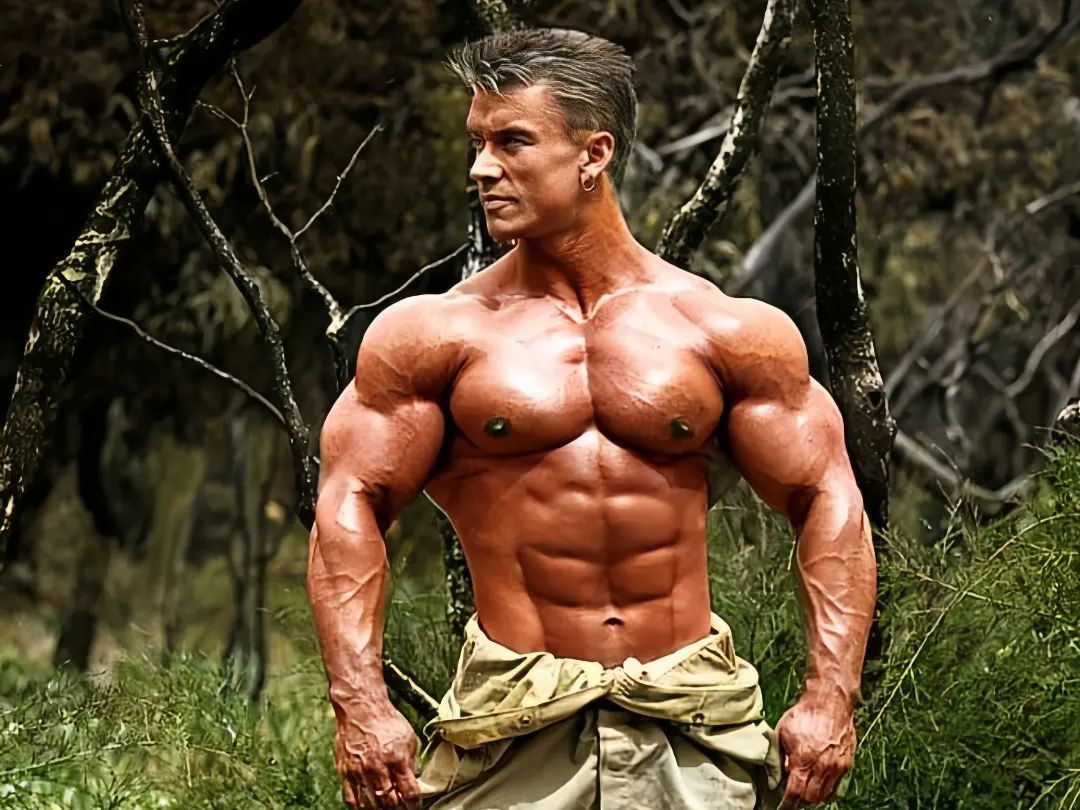

Lee Priest has become a bodybuilding icon despite never winning the Mr. Olympia or the Arnold Classic. Fans consider a handful of bodybuilders like Flex Wheeler, Shawn Ray, and others, as uncrowned Mr. Olympia winners. However, Wheeler and Ray have a better record than Priest on paper, having won the Arnold Classic and placed second at the Olympia multiple times.
Watch What’s Trending Now!
So, why do many bodybuilding fans see the Australian bodybuilding star with the same lens as the Flex Wheeler and other legendary competitors? That’s because the bodybuilding world believed that Lee Priest had what it took to become a Mr. Olympia. However, they also believed that his talent got squandered because of his prolonged feud with the IFBB. Yet, before we shine the light on the Blonde Myth’s issues with the IFBB, we must learn what made Priest special.
ADVERTISEMENT
Lee Priest: The bodybuilding prodigy
Lee Priest was born into a “working-class family,” on July 6, 1972, in Newcastle, New South Wales. The young boy had an adventurous nature and started learning rugby and karate even before he became a teenager. Priest’s grandfather, who wrestled in the army, saw his grandson’s enthusiasm towards sports and enrolled him in the local police force’s boys’ gymnastics club.
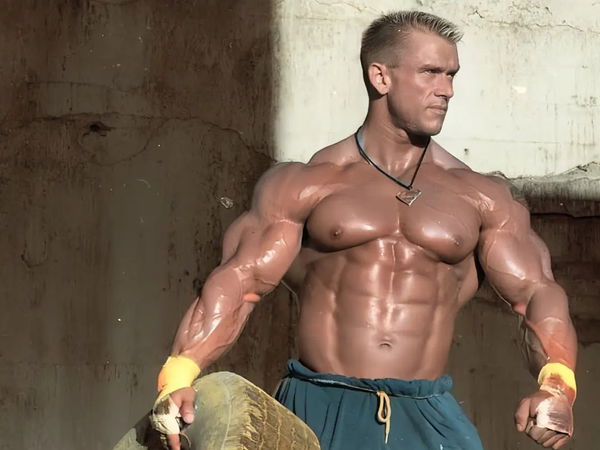
ADVERTISEMENT
While Lee Priest started learning gymnastics, he also showed the qualities that lead to success. The youngster arrived before the classes started and would train with the weights in the gymnasium. Soon, the young boy fell in love with training with weights and officially started bodybuilding training when he was only 13. He started competing after only one year of training.
ADVERTISEMENT
However, Lee Priest immediately found success, despite being among the shorter competitors and a rookie in terms of training experience. In 1986, Lee Priest won three local junior bodybuilding contests at 14. While his family had been on the fence about the boy competing, they supported him after the bodybuilding prodigy started winning shows.
Top Stories
Everything You Need to Know About Mr. Olympia’s Sole Owner Jake Wood, Who Also Brought Ms. Olympia Back
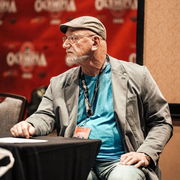
Despite Featuring in Over 400 Magazines and $2,500,000 Worth, 54-Y.O Age-Defying Bodybuilder Values Something Else Over Money: “My Biggest Accomplishment”
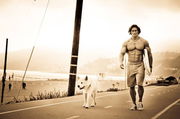
Bullied for Her Staggering Height, 6ft Female Football Athlete Turned Bodybuilder Set to Feature in Gladiators’ Reboot

Jay Cutler vs. Ronnie Coleman: Net Worth Comparison Between Olympia Champions
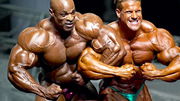
Top 5 Older Bodybuilders/Fitness Influencers Over 50 Who Are Defying Age and Inspiring Others
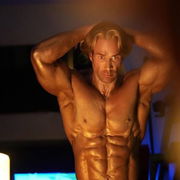
As he progressed in bodybuilding, Lee Priest became a huge fan of none other than Arnold Schwarzenegger. The Austrian Oak had transformed bodybuilding, and Priest saw him as an idol. However, another bodybuilding icon and Arnold Schwarzenegger fan, Tom Platz, would have a greater influence on the young bodybuilder.
At 17, Lee Priest conquered the Australian bodybuilding scene after becoming the IFBB Mr. Australia. The Blonde Myth defended his Mr. Australia crown in 1991 and 1992. At 5’4, Lee Priest’s incredible genetics helped him regularly beat taller and heavier bodybuilders. It was his time to make a splash on the international stage, and so he did, surpassing expectations. Some complications along the way with the IFBB however tarnished his image for a while.
ADVERTISEMENT
A tumultuous relationship with the IFBB
Lee Priest approached then-IFBB Pro Division Director Wayne DeMilia to grant him Pro-status. However, DeMilia turned down the 20-year-old bodybuilding prodigy, saying he was too young and needed to win more shows before turning pro. This was the first hurdle in what would turn out to be a rocky relationship with the IFBB.
ADVERTISEMENT

Hungry to prove himself, the Mr. Australia winner traveled to the world’s capital of bodybuilding, the United States. Lee Priest aimed to compete at the Niagara Falls Open Amateur contest. The amateur competition was part of the larger Niagara Falls Pro Invitational. The young bodybuilder also started training at Gold’s Gym, the Mecca of bodybuilding, to prepare for the show.
ADVERTISEMENT
However, he caught a lucky break when NPC President Jim Manion spotted him. Mainon became immensely impressed at how much muscle Priest carried on his 5’4 frame while being ripped. “You should be a pro,” said Manion. The NPC boss immediately made arrangements to ensure Lee Priest could compete at the 1993 Niagara Falls Pro Invitational.
Besides attaining giant killer status, Priest became known to fans for his no-nonsense takes on subjects he didn’t agree with. Priest would speak openly about any ideological differences he had with the IFBB. He also became vocal about the lack of prize money in bodybuilding. In fact, Lee Priest once argued with DeMilia during a press conference about athlete pay.
In 2002, Lee Priest placed 6th at the Olympia. However, despite not placing among the top three, the Australian said he would divide his prize money with other athletes because they didn’t get paid. He even gave his word in writing to DeMilia on stage. Fans also thought Priest didn’t place higher because of his outspoken displeasure about the pay disparity. However, things only got worse.
ADVERTISEMENT
Lee Priest vs. IFBB and the lifetime ban
In 2004, Wayne DeMilia left IFBB. However, he established Pro Division Inc. He also continued to host the Night of Champions contests, although they had originally started under the IFBB’s banner. Lee Priest landed in serious trouble with the IFBB when he competed at the Night of Champions (New York) and the Night of Champions Britain in 2006.
ADVERTISEMENT
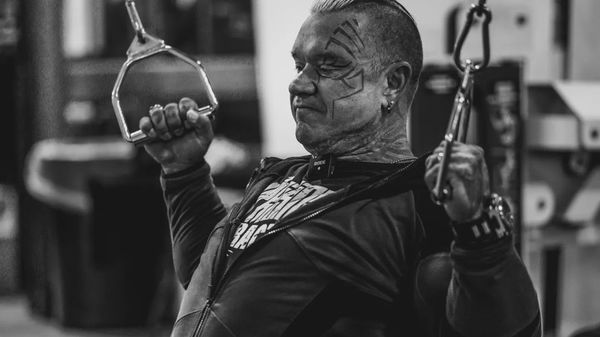
Joe Weider had established that IFBB Pros who compete in completing organizations would get temporarily or permanently banned from the org. Since. Lee Priest had done just that, they banned the bodybuilder for two years. Wayne DeMilia’s Night of Champions also didn’t last. The IFBB acquired it and renamed it the now-prestigious New Your Pro. While he returned after the ban, Lee Priest took a break from competition because of an arm injury.
Finally, after a career filled with ups and downs, Lee Priest received a lifetime ban from the IFBB in 2010 after appearing on a political podcast. The bodybuilding icon’s last hurray would be winning the NABBA Mr. Universe title in 2013. However, he hasn’t competed since then. Although Lee Priest never reached the heights many thought he was capable of, Priest’s no-nonsense nature and legendary physique had turned him into a bodybuilding icon.
ADVERTISEMENT
ADVERTISEMENT
ADVERTISEMENT

